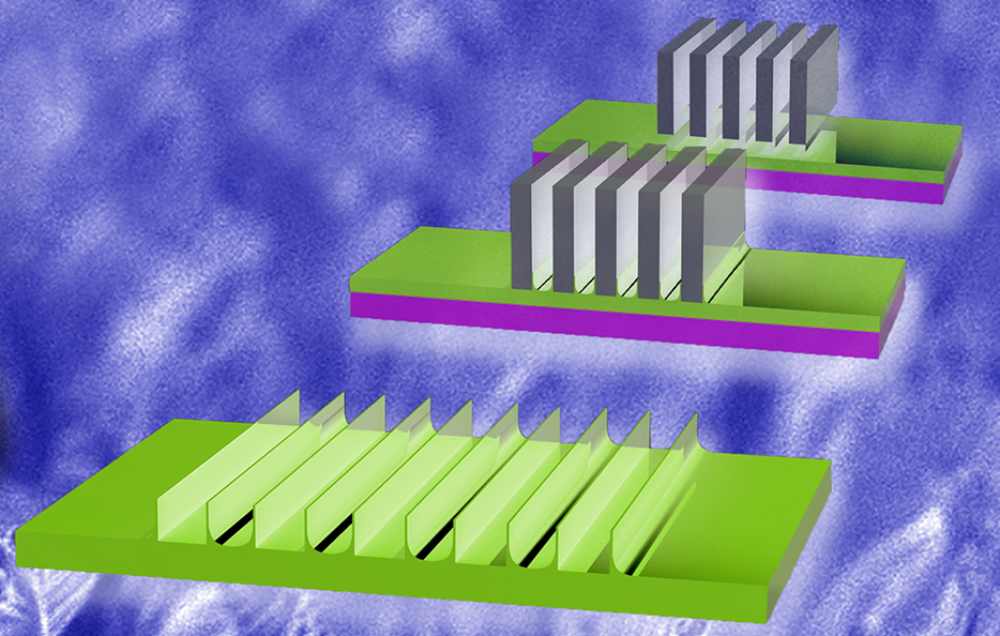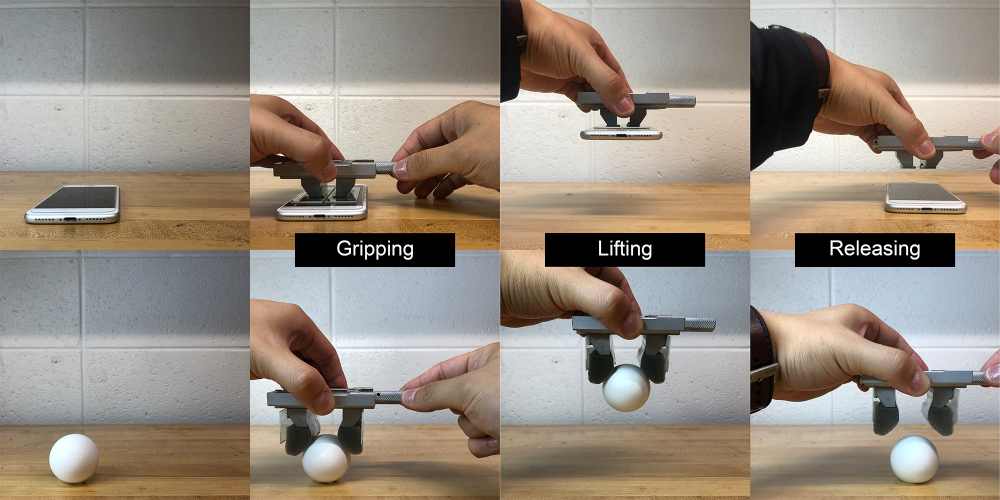Geckos can stick to surfaces because of their bulbous toes, which are covered in hundreds of microscope hairs.
With the tiny lizard as a model, researchers over the years have been developing materials that allow a repeatable grip and detachment to surfaces. (Listen to a recent Here's an Idea podcast episode to learn about Stanford Professor Paul Steen's ideas for wall-climbing gloves, for example.)
A team at Georgia Tech has discovered a Velcro-like way of mass-producing gecko-inspired adhesives.
The faster manufacturing method offers a range of new applications, according to principal investigator Prof. Michael Varenberg, including pick-and-place industrial machines, wall-scaling cleaners, and even small repair robots that travel on the external surface of the space station.
"Many researchers demonstrating gecko adhesion have to do it in a cleanroom in clean gear. Our system just plain works in normal settings," said Varenberg in a recent press release . "It is robust and simple, and I think it has good potential for use in industry and homes."
Previous methods for creating gecko-inspired adhesion involve the process of molding and creating hundreds of micron-sized protrusions. Ingredients are poured onto a template to create the short mesoscale walls that run parallel to each other across a material's surface; the mixture reacts, sets to a flexible polymer, and is then removed.
The molding process takes time, however, and releasing the material from the template can disturb the quality of the attachment surface, says Varenberg.
The Georgia Tech adhesion method leaves the mold behind and forms the mesoscale walls by pouring ingredients onto a smooth surface. The polymer partially sets, and then rows of protrusions are made with laboratory razor blades.
The material sets again around the blades, which were then drawn out, leaving behind micron-scale indentations surrounded by the desired walls.

Varenberg and first author Jae-Kang Kim published details of their new method in the journal ACS Applied Materials & Interfaces on April 6, 2020.
To generate adherence, the wall-shaped projections require minor shear force, like a tug or a gentle grab. To detach, the shear needed to activate the adhesive has to be removed. As shown in the video below, rotating a vise knob applies and removes shear activation.
{youtube} https://www.youtube.com/watch?time_continue=74&v=gCGdPHULaO4 {/youtube}
Using polyvinylsiloxane (PVS) and polyurethane (PU), Varenberg’s research team "drew" walls, separated by U-shaped and V-shaped spaces. The V-shape made in PVS worked best and created the strongest attraction, says Varenberg, but polyurethane is the better, more common material for industry. The Georgia Tech group is currently working on a V-shape gecko gripping pattern in PU.
In a short Q&A with Tech Briefs below, Prof. Varenberg explains more about the mass-production method, and what separates his team's gecko-inspired material from other adhesives.
Tech Briefs: How does your manufacturing method of gecko-inspired adhesives compare to existing methods?
Prof. Michael Varenberg: The so-called flap-, wedge-, or wall-shaped structures can be attributed to geckos, though spiders and insects also possess them. These structures are active and require shearing to be actuated. To date, all these structures were created by template-based molding. Our surface structures are made by drawing, and perform better than analogous microstructures.
Tech Briefs: Take us through your manufacturing process. How long does the manufacturing take, compared to molding?
Prof. Michael Varenberg: In short, we dip razors into curing polymer, and then pull them out to draw thin wall-shaped projections. The end-user will need to buy adhesive surface the same way as they buy Velcro, for instance. The manufacturing time depends on the polymer we use. PVS cures within 5 minutes. PU cures within half an hour. If using UV-curable polymers, similar to those used by dentists, the process may be even shorter.
Tech Briefs: How much weight does the adhesive support? How heavy are the objects that it can hold up?
Prof. Michael Varenberg: This is the question of optimization. Currently, our best microstructure can support weight of 10 kN per m2 in normal direction, and 60 kN per m2 in tangential direction to the surface in actuated mode. When actuation is removed, all forces are at least 40 times smaller.
Tech Briefs: How do you ensure you get close to the precision expected from molding?
Prof. Michael Varenberg: We do not need precision similar to that obtained with molding, though using UV-curable polymers can help in improving the accuracy. Our microstructures outperform all known analogues even being made not very precisely.
Tech Briefs: What is most exciting to you about this achievement, and what’s now possible because of it?
Prof. Michael Varenberg: What I find the most exciting about this achievement is that after about two decades of research in clean rooms, a gecko-inspired adhesive can now be manufactured in a kitchen.
What do you think? Share your comments and questions below.
Transcript
No transcript is available for this video.


